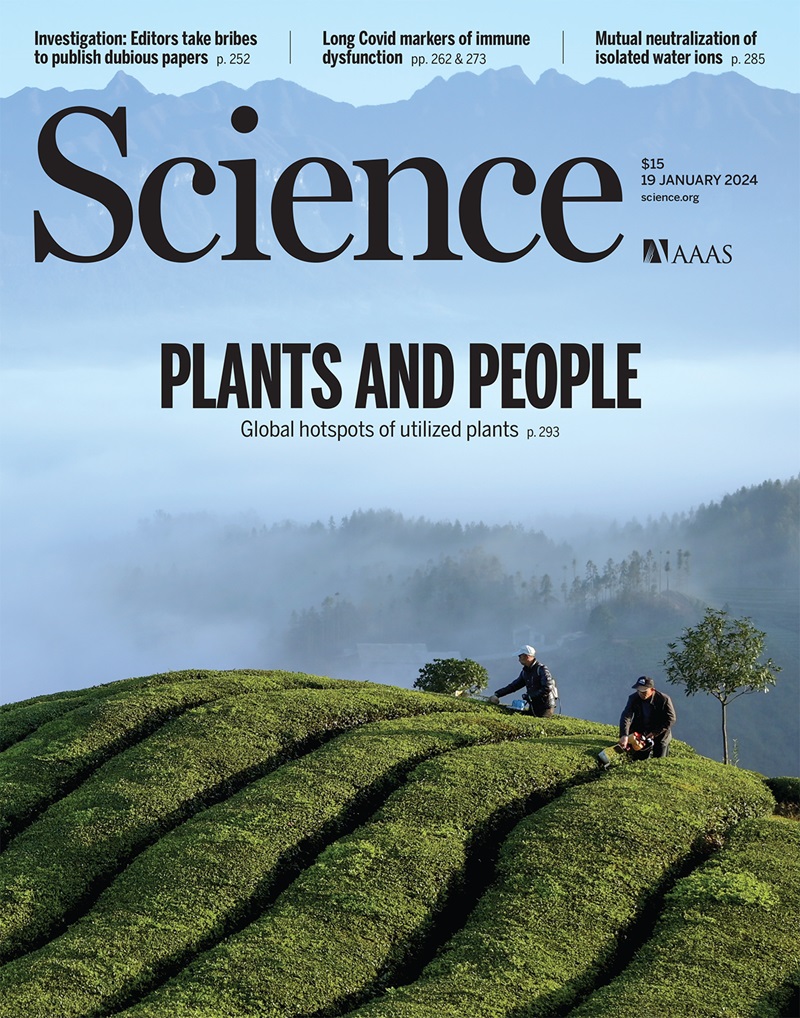300,000-year-old wooden tools from Gantangqing, southwest China
IF 44.7
1区 综合性期刊
Q1 MULTIDISCIPLINARY SCIENCES
引用次数: 0
Abstract
Evidence of Early and Middle Pleistocene wooden implements is exceptionally rare, and existing evidence has been found only in Africa and western Eurasia. We report an assemblage of 35 wooden implements from the site of Gantangqing in southwestern China, which was found associated with stone tools, antler billets (soft hammers), and cut-marked bones and is dated from ~361,000 to ~250,000 years at a 95% confidence interval. The wooden implements include digging sticks and small, complete, hand-held pointed tools. The sophistication of many of these tools offsets the seemingly “primitive” aspects of stone tool assemblages in the East Asian Early Paleolithic. This discovery suggests that wooden implements might have played an important role in hominin survival and adaptation in Middle Pleistocene East Asia.中国西南部甘塘庆30万年前的木制工具
早更新世和中更新世木制工具的证据非常罕见,现有的证据仅在非洲和欧亚大陆西部发现。我们报告了在中国西南部甘塘庆遗址发现的35件木器,这些木器与石器、鹿角坯(软锤)和切割过的骨头有关,其年代为~361,000至~250,000年,可信区间为95%。木制工具包括挖掘棒和小的、完整的、手持的尖工具。许多这些工具的复杂程度抵消了东亚旧石器时代早期石器组合中看似“原始”的方面。这一发现表明,木制工具可能在中更新世东亚地区的人类生存和适应中发挥了重要作用。
本文章由计算机程序翻译,如有差异,请以英文原文为准。
求助全文
约1分钟内获得全文
求助全文
来源期刊

Science
综合性期刊-综合性期刊
CiteScore
61.10
自引率
0.90%
发文量
0
审稿时长
2.1 months
期刊介绍:
Science is a leading outlet for scientific news, commentary, and cutting-edge research. Through its print and online incarnations, Science reaches an estimated worldwide readership of more than one million. Science’s authorship is global too, and its articles consistently rank among the world's most cited research.
Science serves as a forum for discussion of important issues related to the advancement of science by publishing material on which a consensus has been reached as well as including the presentation of minority or conflicting points of view. Accordingly, all articles published in Science—including editorials, news and comment, and book reviews—are signed and reflect the individual views of the authors and not official points of view adopted by AAAS or the institutions with which the authors are affiliated.
Science seeks to publish those papers that are most influential in their fields or across fields and that will significantly advance scientific understanding. Selected papers should present novel and broadly important data, syntheses, or concepts. They should merit recognition by the wider scientific community and general public provided by publication in Science, beyond that provided by specialty journals. Science welcomes submissions from all fields of science and from any source. The editors are committed to the prompt evaluation and publication of submitted papers while upholding high standards that support reproducibility of published research. Science is published weekly; selected papers are published online ahead of print.
 求助内容:
求助内容: 应助结果提醒方式:
应助结果提醒方式:


